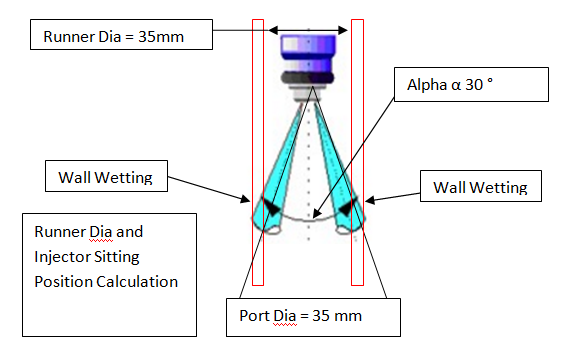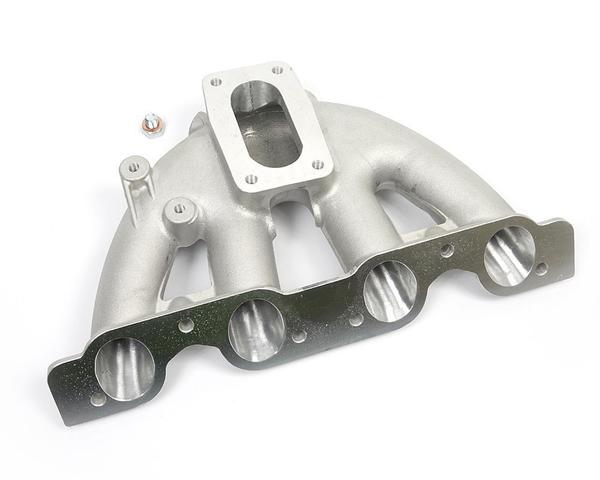Electronic Throttle Body Design Failure Mode Effect Analysis Example
Consider potential failure modes for each component and interface related to throttle body -
- A potential failure mode represents any manner in which the product component could fail to perform its intended function or functions.
- Remember that many components will have more than one failure mode. Document each one. Do not leave out a potential failure mode because it rarely happens. Don’t take shortcuts here; this is the time to be thorough.
List potential effects of failure by / on Throttle Body
There may be more than one effect for each failure.
The effect is related directly to the ability of that specific component to perform its intended function.
- An effect is the impact a failure could make should it occur.
- Some failures will have an effect on customers; others on the environment, the process the product will be made on, and even the product itself.
- To determine the severity, consider the impact the effect would have on the customer, on downstream operations, or on the employees operating the process.
The severity ranking is based on a relative scale ranging from 1 to 10.
- A “10” means the effect has a dangerously high severity leading to a hazard without warning.
- Conversely, a severity ranking of “1” means the severity is extremely low.
- The occurrence ranking is based on the likelihood, or frequency, that the cause (or mechanism of failure) will occur.
- If we know the cause, we can better identify how frequently a specific mode of failure will occur.
The occurrence ranking scale, like the severity ranking, is on a relative scale from 1 to 10.
- An occurrence ranking of “10” means the failure mode occurrence is very high; it happens all of the time. Conversely, a “1” means the probability of occurrence is remote.
- See FMEA Checklists and Forms for an example DFMEA Occurrence Ranking Scale.
- A detection ranking of “1” means the chance of detecting a failure is almost certain. Conversely, a “10” means the detection of a failure or mechanism of failure is absolutely uncertain.
Prevention controls are always preferred over detection controls.
- Prevention controls prevent the cause or mechanism of failure or the failure mode itself from occurring; they generally impact the frequency of occurrence. Prevention controls come in different forms and levels of effectiveness.
- Detection controls detect the cause, the mechanism of failure, or the failure mode itself after the failure has occurred BUT before the product is released from the design stage.
RPN = Severity x Occurrence x Detection.
|
Function
|
Failure
Mode
|
Failure
Effect
|
SEVERITY
|
Potential
Cause
|
OCCURANCE
|
Design
Control
|
DETECTION
|
RPN
|
|
|
Prevention
|
Finding
|
||||||||
|
Bore Dia
|
Chocking
|
Sudden change in Torque
|
8
|
Wrong Bore Dia
|
4
|
Throttle Bore/ Cross Section
Optimization
|
Engine Dyno Test
|
3
|
8*4*3
=96
|
|
Pressure Wave
|
|||||||||
|
High Pumping Loss
|
|||||||||
|
TPS Sensor Functioning ( Two
TPS will be used)
|
Wrong Reading
|
Wrong Air Fuel Ratio
|
4
|
Electromagnetic Noise
No ECU Compatibility
Much Larger Bore Dia Than
required
|
3
|
Use optimized Bore Dia.
Use highly sensitive motor and
Minimum Angle change of Valve
low.
|
Engine Calibration by Driver
Control Team
|
7
|
4*3*7=84
|
|
Variation in Reading
|
|||||||||
|
Air Leakage
|
|||||||||
|
Gasket
|
Leakage
|
Accident
|
10
|
Wrong thickness
Wrong Mounting Hole Dia and
Tolerances
Wrong Material
|
2
|
Stress and Strain CFD, Thermal
Stress Simulation
|
Engine High Temperature Test
|
2
|
10*2*2=40
|
|
Burn
|
|||||||||
|
Throttle Assembly on Restrictor
|
Uneven Flow
|
Low Volumetric Efficiency
|
8
|
Wrong Tolerance, Wrong
Material,
Shrinkage due to Thermal
Expansion
|
2
|
GDNT and Tolerance Stack up
Analysis
|
Engine Durability Test
|
2
|
8*2*2=32
|
|
Bolt Hole Mismatch
|
|||||||||
|
Fatigue and Crack
|
|||||||||
|
Hose Assembly on Throttle
|
Hose Shrinkage due to inner vacuum
|
Pumping Loss
|
4
|
Low Material Thickness, low
Stiffness , High Engine Room Temperature
|
4
|
Internal Vacuum Simulation
|
Sudden Acceleration Test
|
4
|
4*4*4=64
|
Based on above DFMEA, following are recommended action -
|
Function
|
Failure Mode
|
Recommended Action
|
|
|
Bore
Dia
|
Chocking
|
Decrease
shaft dia.
No
sudden change in inlet or out let diameter.
|
|
|
Pressure
Wave
|
|||
|
High
Pumping Loss
|
|||
|
TPS
Sensor Functioning ( Two TPS will be used)
|
Wrong Reading
|
First
Sensor measure Valve open angle and second sensor measure valve close angle.
Keep
Angle Tolerance < 0.1 Deg/mVolt. Calibrate ECU and TPS Sensor for Torque
output.
|
|
|
Variation
in Reading
|
|||
|
Air
Leakage
|
|||
|
Gasket
|
Leakage
|
High
surface finishing on throttle and restrictor.
|
|
|
Burn
|
|||
|
Throttle
Assembly on Restrictor
|
Uneven
Flow
|
Make
Taper Hole in Throttle.
|
|
|
Bolt
Hole Mismatch
|
|||
|
Fatigue
and Crack
|
|||
|
Hose
Assembly on Throttle
|
Hose
Shrinkage due to inner vacuum
|
Use
Plastic Pipe from Air Cleaner to Throttle.
|







